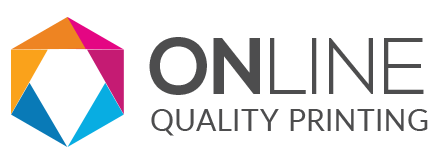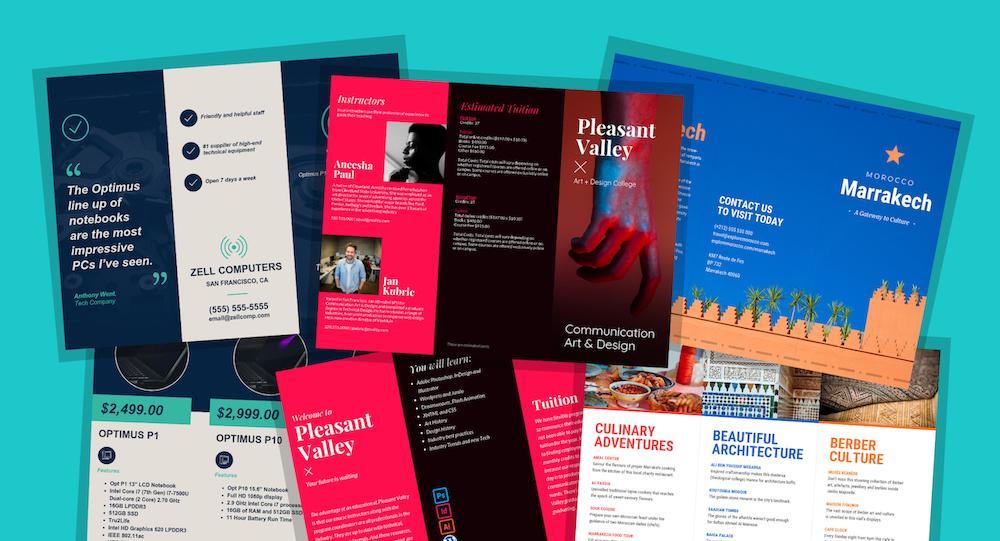People like reading in print. Recent research has identified that people remember more when they read in print, so if you want to hook new customers by introducing your company or organisation then print a business brochure.
Most of us have been to an exhibition or trade fair and come across companies we may never have heard of before. We look for ways of identifying with the brand, to see what they do and how they do it while gauging the ‘character’ of the business.
Business brochures are brilliant for this task and can also be handed out at networking events or initial client meetings in order to leave a lasting positive impression.
In comparison to other promotional printed materials such as a flyer or leaflet, a business brochure requires a different approach to content reflect its intended use. A flyer is usually short and punchy to promote an event, product launch or special offer. They are usually printed in bulk quantities to give it a chance of being read by your target audience.
A leaflet is more of an initial attention grabber, ‘We are here and you can have this’. However, a brochure is an opportunity to show an in-depth view and as its likely to be a greater investment. So it is even more important that it’s put in front of the right people to ensure it’s not as disposable as a leaflet.
In order that you make the most of this printed asset, we’ve created 10 top tips to ensure you get the right message across and get the best return on your printing budget.
- Align with your image
- Include your USP
- Decide on your message
- Play to your audience
- Create Interest
- Let if Flow, Let if Flow
- Your story
- Stay relevant
- Signpost the next step
- Mission Statement
Align with your image
This sounds simple but it is key that all your marketing communications share the same image. This is not just your logo, it’s not only your company colour theme, its your core principles and style.
Technology giant Apple sell cool products, their sleek minimalistic product design resonates quality and high end lifestyle on the same level of the luxury car manufacturers. Their print marketing and website obviously follows suit.
High street banks have over recent years tried to soften their image to appear more friendly and less austere, so their printed booklets and sales materials follow this approach. They are more informal and less corporate in attempt to make the banks look more approachable.
Colour plays such massive part with its association with your brand. Although the assumption of pink for girls and blue for boys is a contentious issue, colour plays on our sub-conscious mind with pre-conceived ideas of what our brain assumes should be correct. A power tools company such as Screw-Fix would never choose pastel colours as these are not aligned with the functional and masculine products, likewise an Eco friendly product company would choose earthy colours rather than bright red.
Include your USP
Even if you are just starting a new company its vital you know what your ‘unique selling point’ is. It is key to how you differentiate yourself from your competition. In your brochure you need to answer the age-old question ‘Why should I buy from you and not them?’ It might be a different product you sell or special service your provide or it might be the way in which you deliver it, but it is important to underline this in your brochure without highlighting the faults of your competition, unless you’re a political party of course.
Decide on your message
A brochure’s principle premise is to tell people about the business. That might sound obvious but plenty of people get side tracked by introducing new products or services. If you want to re-introduce your business to customers, perhaps old contacts or move into a new market, then your message might be around a change to the business offerings, but make that the focus. Whatever the reason for the brochure, select a single focus and stick to it.
Play to your audience
With all marketing, you need to be in-sync with your target audience. Decide upon your target audience and make a point of directly targeting them, give them what they want and worry less about the people you might exclude. You cannot serve everyone, just focus on your desired target market and how you want to engage with them, your printed promotions will be much more effective if you nail this. A brand with too wide an appeal will struggle to appeal to anyone.
Create Interest
Your front page should make people want to read on, like a good book you have to be compelled to read it in the first place. By having striking front cover, your reader will want to turn the page and find out more about your business. The line you take here is your hook to draw the reader in but don’t be too dramatic or make false promises, this will only backfire. It can be difficult for some business, like a wholesaler of plumbing fittings, to come up with something enticing. Gone are the days of just placing a pretty girl on the front cover of a product brochure, this worn out tactic use to attract readers but this is short lived. The inside of the booklet is only likely to contain product information, so unless they are truly interested in your products or services, the brochure is likely to end up in the bin.
Most people who are in business are in an industry they know. Imagine you are your own customer, put yourself in your customer’s shoes and think about what would appeal to you or test it on friends and colleagues. Sell the benefits ‘to the customer’ of the product of service, picture the product from their point of view. If you can answer the potential customers question of ‘how will benefit me?’ then you’ve got their attention.
Let if Flow, Let if Flow
Your brochure should have a clear sequence to the information you are sharing. Typically you may start with the basics, what you do and where you do it. Then you might say how you do it and all importantly, why it will help the reader. There is little point in telling them about exciting state of the art equipment unless they know what it is; they need to know how it benefits them. As you go through, build up the information providing more depth further on, such as branch specifics or your ethical sourcing of materials or more in-depth explanations of processes you do.
Your story
A little background information on your business can do wonders to build trust, but don’t go overboard with the history lesson. It is easy to get carried away with the all the challenges you faced or milestone you passed. Keep it upbeat; you want people to know you have experience under your belt and that you will be around far into the future to provide after sales support. Having a story does help to humanise your brand, the reader can relate to it in a way that will warm them to you as a potential buyer.
Stay relevant
If you are printing larger quantities to save money you want the brochure to be relevant for at least 12 months so if you are considering printing business brochures in larger quantities avoid talking about new products, services, staff or equipment. An example of this would be rather than saying you have been in business for 20 years, say you have been in business since 1995, so your brochure doesn’t date so quickly.
It’s usually more cost effective for a brochure to be printed in bulk, as this makes it far more cost effective per copy in principle. However, this does not restrict you. Its possible to buy a smaller quantity of booklets as little as 10 copies you may want to hand out at a specific event or meeting. These can be more personalised and contain information only relative to the day you are intending to use them. This means you haven’t got to produce such a comprehensive brochure to cover every aspect of the business, which is sat gathering dust for 6 months till you need to send some more out. It can be far more flexible to go for a short run (lesser quantity) of brochures as they can also be more tailored and bespoke to a specific purpose.
Signpost the next step
The term ‘Call to Action’ should be familiar with you and using one in your business brochure is no exception. You may not be selling your individual services or products here, but you are selling yourself or business as a whole.
To start that relationship with a new customer you need to include your contact details, usually towards the end of the brochure so that they know what to do next. You ‘CTA’ might say, ‘Call to discuss the right products for you’ or ‘ Get in touch for a bespoke quote today’ depending on your industry.
Although a CTA is actually advising your customers on what to do next, sounds rather obvious really, if they are interested then surely they will get in touch? No not always. Without trying to be too demanding either, there is nothing worse than bring shouted at.
A good CTA really acts as a small subconscious message to entice them to do something once they have finished reading your brochure. They may just decide to put the brochure down once they have read it, so by adding a CTA and some ‘subtle’ urgency will prompt them to act as you want them to.
Mission Statement
If this is done properly, then it should be mantra for your business. It is well worth including this or a watered down version within your brochure, as it gives people a clear idea of your intent and values. In some B2B situations, there are high value contracts on the table so a businesses vision can make a big difference to securing a positive first impression. This doesn’t have to be a long drawn out future plan for the company and the organisation, it can be reduced to as little a few bullet points – but try to make this unique to you.
Are you looking for a Professional FLYER OR BROCHURE?
Let Online Quality Printing design a wonderful and professional brochure or flyer for your company. Contact us here and let’s start working togheter


